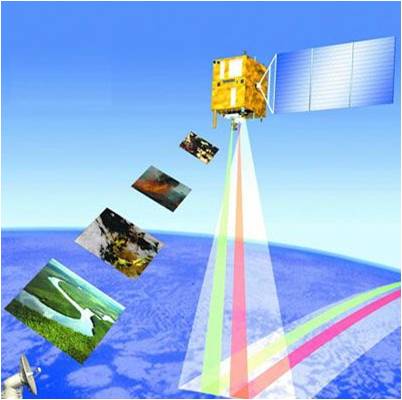Fengyun (FY), which literally means “wind and cloud”, is a series of Chinese weather satellites.
The FY-3 satellite series is China’s second-generation polar orbit meteorological satellite. So far, three satellites in the series – FY-3A, FY-3B and FY-3C – have been successfully launched. NSSC was responsible for the development and calibration of 40 payloadson board four FY satellites, a majority of which are related to space environment exploration, and microwave and remotesensing.
Soaring into space on May 27, 2008 from the Taiyuan Satellite Launch Center, FY-3A was the first satellite in the FY-3 series. From 2008 to 2013, three NSSC-developed payloads on board the FY-3A meteorological satellite – the Microwave Humidity Sounder (MWHS), the Ultraviolet Ozone Unit (TOU) and the Space Environment Monitor (SEM) – functioned quite well, orbiting Earth and providing organizations such as the China Meteorological Administration with real-time scientific data. It is also noteworthy that FY-3A has a design life of two years, but has been in service for five years. To mark FY-3A’s fifth anniversary, on June 25,2013, a celebration and award ceremony were held in Beijing.
On Sept. 23, 2013, FY-3C, the third satellite in the FY-3 series, was successfully launched from the Taiyuan Satellite Launch Center, and was later boosted into predetermined orbit. There are four NSSC-developed payloads onboard, including the above-mentioned MWHS, TOU and SEM and the GNSS Occultation Sounder (GNOS). Of these, GNOS is a brand new payload designed for global three-dimensional and vertical sounding of the Earth’s atmosphere. Since being powered on, GNOS has been operating normally in orbit. For the first time in the world, GNOS achieved space-borne positioning using BDS signals and received BDS radio occultation (RO) signals. Its RO detection ability has reached an international level.
HY-2, China's maritime satellite, will play an important role in prevention and reduction of maritime disasters. The HY-2 carried four scientific instruments as payloads, among them, the Microwave Altimeter, the Calibration Radiometer, the Microwave Scatterometer, are developed by NSSC, CAS.

Application satellite for multiple uses (Image by NSSC)


